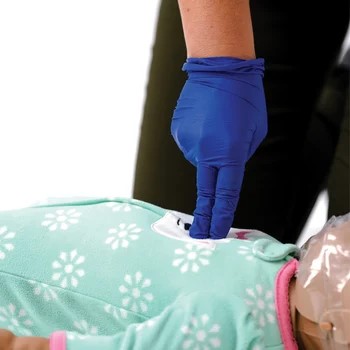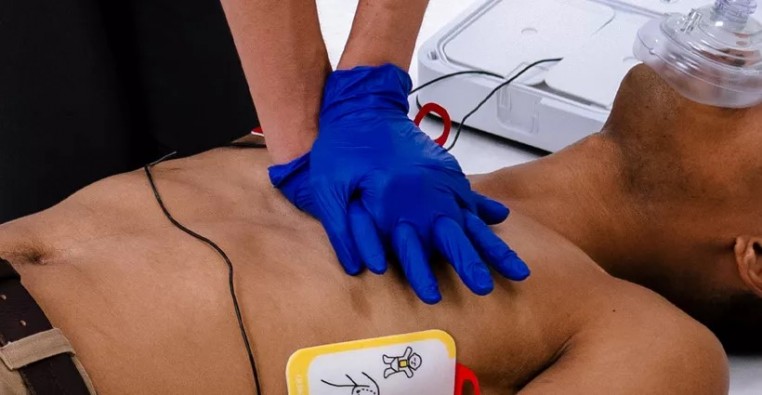The Importance of High-Quality Chest Compressions
High-quality cardiopulmonary resuscitation (CPR) is the primary influence on survival from cardiac arrest. It helps keep the brain and other vital organs alive by pushing oxygen-rich blood throughout the body via external compressions and rescue breathing.
High-quality chest compressions are the foundation of high-quality CPR. External compression of the chest increases pressure inside the chest and directly compresses the heart, forcing blood to move from the chest to the lungs, heart, brain, and the rest of the body.
Therefore, regularly reviewing and practicing proper hand placement can significantly improve the quality of chest compressions during an emergency situation.
CPR Hand Placement for Adults
For an adult cardiac arrest victim, follow these chest compression steps to ensure you are positioned correctly:
- Position yourself at the person’s side, kneeling close to one side of the chest.
- Place the heel of your hand in the centre of the chest, on the lower half of the breastbone.
- Place the heel of the other hand directly on top of the first hand.
- Lift or interlock your fingers to keep them off the chest.
- Position your shoulders directly above your hands and straighten your arms to lock your elbows.
- Push hard and deep, straight down, using your upper body weight to compress approximately one third of the depth of the chest with each compression. This equates to more than 5cm in adults
- Push fast at a compression rate of 100-120 compressions per minute.
After each compression, allow the chest to fully rise by lifting your weight off the person’s chest. Avoid lifting your hands completely off the chest, but don’t lean on the chest between compressions.
Push hard and fast until you see obvious signs of life or until emergency help arrives and takes over.

CPR Hand Placement for Adults
While the overall goal of chest compressions is the same for children and infants, there are a few key differences to note when performing CPR on a child versus an infant.
CPR Hand Position for Children and Infants
For children ages one-year to 8-years, continue to position your hands in the centre of their chest. Use one or two hands for compressions, depending on the size of the child. If you become fatigued during compressions, use both hands to ensure you continue to reach the desired depth of approximately one third of the depth of the chest with each compression. This equates to at least 5 centimetres for a child.

For children younger than one year, position two fingers in the centre of the chest just below the nipple line. Alternatively, you can use a two-thumb encircling-hands technique. Aim for a compression depth of about 4 centimetres or 1/3 the depth of the infant’s chest.
Allow complete chest recoil between compressions and minimize interruptions. Aim for a compression rate of 100-120 compressions per minute.

Want to learn more. Why not start with our Online Basic Plus First Aid Course program https://book.medicfirstaid.co.nz/ . Once completed you will be able to upgrade this to a full workplace certificate by attending one of our practical skills sessions or Course Types .
An Overview of Adult, Child, and Infant Hand Position for CPR
Whether performing traditional CPR with rescue breaths or providing compression-only CPR, it’s important to feel confident in your hand placement.
Let’s recap how to position your hands for CPR:
| Action | Adult | Child | Infant |
| Compression Technique | 2 Hands | 1 or 2 Hands | 2 Fingers. |
| Compression Location | Centre of chest, on the lower half of the breastbone | Centre of chest, just below nipple line if using 2 fingers | |
| Push Hard | More than 5 cm | At least 5 cm | About 4cm |
| Push Fast | 100-120 compressions per minute | ||
This simple guide can be added to first aid kits or displayed in public view for quick reference.

